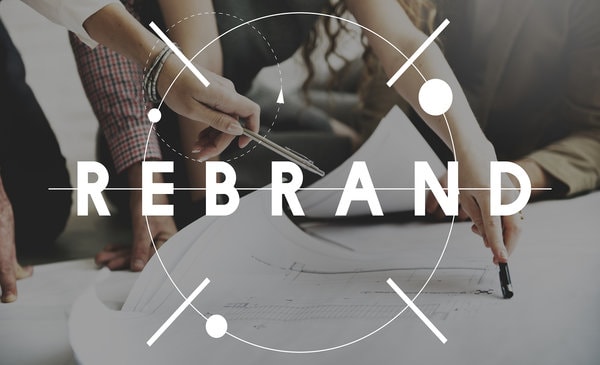By Lee Frederiksen
Branding a professional services firm comes in two flavors:
1) Rebranding an existing firm or service line, and
2) Launching a new one.
These two approaches to a brand launch are similar in overall process but distinct in their twists and turns.

Brand Launch Defined
Brand launch is the process of creating a professional services brand where none currently exists. Since you are starting from scratch, you have a unique opportunity to choose how you wish to position your firm in the marketplace, which clients you want to serve and what services you will provide to them. It is the perfect time to develop a compelling value proposition.
Rebranding, on the other hand, involves an existing firm that already has clients, staff and at least some equity in its brand. Rebranding involves updating your identity, marketplace positioning and/or messaging. These changes can apply to the entire firm or a single practice or service. Of course, you have to consider how the new brand will affect existing client relationships, any brand equity your firm has accumulated over the years and your marketing momentum. That’s not the case with a brand launch, where you are starting from scratch with nothing but that big empty flip chart. Your brand equity is zero. And cash is almost always tight.
Both brand launch and rebranding are distinct from a brand extension, in which you add a new service line to an existing firm’s offerings. For example, if XYZ Systems introduces XYZ Cloud Services, that’s a brand extension.
How to Botch a Brand Launch
A brand launch offers a golden opportunity to make a great first impression. Yet many firms manage to botch it — beginning with their firm name. A lot of professional services take a time-honored approach and name their firm after their founders. Or they use a generic service-related term (such as “professional,” “systems,” “technology,” “services” or “associates”) in their name. The resulting moniker is usually long and clumsy, and it soon gets abbreviated into a forgettable string of letters. A long name is a liability on the web, too, where it spawns a domain that’s hard to type and remember.
Speaking of the web, many firms disappoint prospective buyers up front by underinvesting in their most important marketing tool — their website. A cheap-looking, undifferentiated website is a big turnoff. In fact, our research on referrals shows that a third of prospective buyers rule out a firm that was referred to them on the basis of its website alone.
When they need credibility the most, many startups miss all the opportunities to build it. It’s the equivalent of showing up at a formal event in your sweat pants. Yes, there is a better way.
Brand Launch Benefits
It may not seem that a new brand has many benefits to offer. With no clients, no track record and no cash, what’s to envy? But a new professional services brand does offer three compelling advantages:
- The thrill of new. In many cultures, and especially in the US, people are attracted to things that are new. It’s no coincidence that “new” is right up there with “free” as a killer marketing word.
- Strongest positioning platform. It is far easier to introduce a radically different positioning with a new brand. You don’t have to worry about how existing clients are going to react to the change, so you are free to shape your market positioning as you wish.
- Less brand equity at risk.If your positioning is not quite right out of the starting gate, it is much easier to adjust it without confusing the marketplace. This is why an existing firm may choose to launch a separate brand for a radically different positioning rather than put its existing brand equity at risk.
These advantages can be very helpful as you consider a strategy for your new brand launch.
Brand Launch Strategy
Launch strategy is very different for professional services than other types of businesses. In most cases, you have a reduced set of considerations to deal with. For example, service firms rarely use product packaging or need to convince retailers to carry their product. There are no storefronts or end cap displays to worry about. So a lot of the literature on launching a new brand doesn’t really fit your situation.
Unfortunately, just because you have fewer issues to contend with doesn’t mean that a launch is easier — just different. Most of those differences arise out of the nature of professional services.
For example, the way a consumer experiences a restaurant, hotel or clothing manufacturer is very different from the way a the client experiences a trial layer, accountant or computer security consultant.
In the professional services world, your brand is your reputation (what you are known for) multiplied by your visibility within your target audience. It is built more on trust and expertise than customer experience. If you want exceptional service or a “wow” experience, you go to a spa or a fine-dining restaurant, not to your auditor or structural engineer.
Expertise is the number one selection criteria of professional services buyers and it is the factor that “tips the scale” in about 74% of final selections. But there is a problem with expertise. It’s invisible. You can’t see it, feel it or tell if someone has it by looking at them. That means you have to make it tangible and visible to your target audience.
Given these differences there are a few key considerations to address when crafting your brand launce strategy.
- What is the key value proposition for your target client?
Why will they choose your firm over the many other alternatives? Is it price alone? This is always risky unless you have a sustainable cost advantage. For most new professional services launches, the answer revolves around offering some sort of superior expertise.
- How will you make your expertise visible?
If you are competing on expertise, visibility is essential. If you are competing on price, you at least need to position your expertise as equivalent to the competition’s: “We do the same work at the same quality level only it costs less.”
There are lots of techniques to build visibility. From books and webinars to videos and networking, you can use an educational approach to get the word out and demonstrate your firm’s expertise. To learn exactly what techniques work best and how to implement them, check out the Visible Expert course in Hinge University, our online training resource.
- How will you pace your brand launch?
Will your launch be a gradual build or a “big-bang” rollout? The decision should be driven by the marketplace and the resources you can afford to put toward it. Some services have short time windows because they can be easily copied by competitors. Others have short lifespans because they address issues that come with a sunset date (think Y2K consulting services at the end of the last century). Both of these situations favor a big-bang introduction. In most other situations, however, a gradual build makes sense. Gradual builds eliminate the need for a large outlay of time and money before revenue has a chance to accrue. Big-bang introductions, on the other hand, often come with large up-front expenses.
Your decisions on these key strategic choices will become the backbone of your brand launch plan.
Building Your Brand Launch Plan
Much like the rebranding process, a brand launch has three phases. But with a launch, those stages tend to play out over a shorter time period. Think days and weeks, not weeks and months, as you build the key elements of your plan.
Phase1: Get the Brand Strategy Right
This phase is aimed at making sure you have positioned the firm properly and have a compelling, easy-to-understand value proposition. As with any branding exercise, it starts with research. Since you don’t have existing clients, you must rely on interviews with prospects and influencers.
Often, your initial positioning will be built around the founders’ reputations and experience. In this case, you can research clients from past engagements to uncover key positioning elements.
Next, you will develop a core set of brand documents. These include a positioning statement and your messaging architecture, which identifies your primary audiences, the key messages to each, barriers to overcome and the proof points that equip you to defend each message. Together, these documents form the strategic foundation for your new brand.
You will, of course, lack case studies — a deficiency you will need to address quickly as you build a base of clients.
Phase 2: Build the Brand
In this phase, you develop your firm’s name, tagline, logo, website, marketing materials and identity tools. It’s fine to develop the most essential pieces first, then add the rest later. This allows you to conserve cash and (because you are not locked into an expensive set of business collateral) gives you room to evolve your messaging as you gain more experience.
In most cases, the most useful tools will be your website, a pitch deck and a single-sheet overview of your firm and its story. Since you are unlikely to have a wealth of case studies, you may want to talk about why you founded your firm and what compelling benefits you bring to your clients. That may not be enough to build critical mass, but it should give you enough material to convince a few initial clients.
You may also want to consider exploring online video, which can be an excellent medium to tell a new firm’s story.
This stage is usually capped off by the development of a brand rollout plan. This plan lays out exactly how the brand will be introduced and developed, including which audiences you will target with your rollout, and in what order. A detailed launch calendar is a great tool to use in your planning process. In the context of a brand launch, the rollout plan takes on a lot of significance, so be sure to allow sufficient time to do it right.
Phase 3: Brand Rollout
Next, you’ll need to implement the plan and introduce your brand new brand to the world. In our experience, most folks are excited by the initial reception of a new brand. If your new brand is well positioned, it will appear fresh and innovative to the marketplace — and offer prospective clients a benefit that is both unique and compelling. That tends to get people excited.
When new brands stumble at this stage, their problems can often be traced back to a failure to get the strategy right. These firms rush to market with a “me-too” market positioning that fails to deliver any real differentiation or competitive advantage. Attempting to be just like your competitors without the benefit of a track record is not a formula for success.
Minor adjustments to the messaging and positioning are quite common during rollout. These adjustments are a normal part of the evolution of a new brand and not a sign of failure.
Building the Strength of Your New Brand
Success can be a double-edged sword. If you have tapped into a healthy market and are offering a compelling set of new benefits, you very well may experience a surge in demand for your services. That’s when delivering on your brand promise can become a challenge. More than a few firms have stumbled at this stage.
The other major challenge is retaining your focus. As you help clients with their critical problems, they may ask you to take on issues that lie at the periphery of your core offerings. Do you accept the assignment?
It’s tempting. After all, diversifying risk is important, right? Be careful. You can easily dilute your brand by taking on too many non-core tasks. While there may be short-term financial benefits to stretching your service offerings, the real value of a brand comes from its distinctiveness and clarity.
A Final Thought
A brand launch is the perfect time to set your firm or practice on a course of lasting success. You have maximum flexibility and the advantage of being novel and exciting. However, while a brand launch offers many potential benefits, it comes with significant challenges, as well.
The most important thing to remember is to concentrate on getting the strategy right. Do your research well. If you can offer a compelling value proposition to an appreciative group of target clients, everything else is easier.
This article originally appeared in Hinge Branding and Marketing Blog.
Sourced from BLUE






